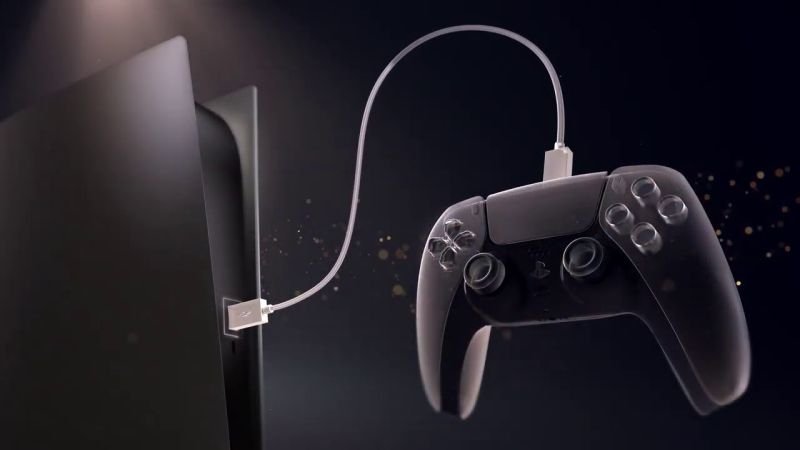In 2022, Intel was poised for a major coup—developing and manufacturing the core chips for Sony’s next-generation PlayStation 6 console. According to sources reported by Reuters, months of negotiations between Intel and Sony could have set the stage for Intel to secure a $30 billion contract over five years. However, despite the potential windfall, Intel ultimately lost the deal, with AMD once again winning Sony’s favor to develop custom chips for the gaming giant.
So, what went wrong for Intel? This missed opportunity was more than just a case of a failed negotiation—it highlights critical challenges facing Intel as it tries to compete in the fiercely competitive chip-making market, particularly in gaming.

The Appeal of the PlayStation 6 Contract
For Intel, the deal with Sony represented a rare and lucrative opportunity to expand its influence in the gaming sector. With the PlayStation 6 expected to dominate the gaming landscape upon release, securing the contract would have loaded Intel’s contract capacity for the next five years and generated $30 billion in revenue. This could have brought stability and predictability to Intel’s financials during a period when the company is facing increased competition from chipmakers like TSMC and Samsung.
Intel, which has historically been strong in the PC market but less influential in gaming consoles, saw Sony’s PlayStation 6 as a chance to enter the custom console chip sector in a more substantial way. The order would have involved not only the manufacturing of chips but also their co-development, with Intel working closely with Sony to design a chip that matched their needs. Such collaboration would have been a game-changer for Intel, potentially setting the stage for more partnerships in the gaming world.
AMD and Broadcom in the Running
Intel wasn’t the only player in the race. Broadcom and AMD were also vying for the contract, with AMD eventually winning the bid. As tradition dictates, AMD will develop the chip’s architecture and design, while Taiwanese semiconductor giant TSMC will handle the manufacturing.
This continued partnership between Sony and AMD is unsurprising, given their long-standing relationship. AMD has consistently delivered for Sony, having developed the custom processors for the PlayStation 4 and PlayStation 5. The challenge for Intel was not only entering a market already dominated by AMD but also overcoming technical and business hurdles that ultimately derailed the negotiations.
Why Intel Failed to Secure the Deal
So why did Intel lose the deal to AMD? According to sources close to the negotiations, there were two primary sticking points: backward compatibility and profit-sharing.
First, Intel would have had to commit significant resources to ensure the new chip architecture maintained backward compatibility with older PlayStation models, a key feature for Sony’s console strategy. Given the complexities of this task, it would have required Intel to divert major resources from other projects, making the venture riskier than anticipated. This requirement likely proved too costly for Intel, especially as it seeks to regain ground in other critical areas like server chips and AI.
Second, the companies struggled to find common ground on a profit-sharing scheme. While developing custom chips for a gaming console doesn’t necessarily offer huge per-unit profits, the long-term financial stability such a contract would offer is invaluable. Yet, Intel and Sony couldn’t agree on the structure of the deal, and the potential rewards for Intel were seemingly outweighed by the risks involved.
Intel’s reluctance to compromise on these fronts cost it the contract, which, by some estimates, would have involved the production of thousands of silicon wafers each month. Missing out on $30 billion worth of revenue is a significant loss for Intel, especially at a time when the company is navigating stiff competition in both its PC and data center businesses.
The Broader Implications for Intel
This setback raises larger questions about Intel’s strategy moving forward. With competitors like AMD and TSMC dominating key sectors like gaming, mobile, and AI chips, Intel needs to find new ways to innovate and secure high-value contracts. Although Intel has remained a strong player in the PC and server markets, it has been slow to adapt to trends like custom silicon for specific applications—such as gaming consoles and AI.
Intel’s failure to secure the PlayStation 6 contract reflects its current struggle to expand beyond its core areas of strength. The gaming console market, dominated by custom solutions, offers massive revenue potential, and Intel is still figuring out how to compete with companies like AMD, which has specialized in custom designs for years. AMD’s success in securing the PlayStation contract underscores its strength in semi-custom chip design, which has become a key differentiator in the increasingly specialized world of chipmaking.
What’s Next for Sony and AMD
For Sony, AMD remains a trusted partner, and their collaboration on the PlayStation 6 is expected to further cement their strong relationship. Given AMD’s past successes with the PlayStation 4 and PlayStation 5, it’s likely that the PlayStation 6 will continue to deliver the performance and backward compatibility that gamers expect.
The continued reliance on TSMC for manufacturing also signals that Sony is sticking with a tried-and-true formula. TSMC’s prowess in advanced semiconductor manufacturing ensures that AMD’s custom chips will meet the high demands of modern gaming, particularly as Sony pushes to incorporate cutting-edge features like ray tracing and AI-enhanced graphics into its next-generation consoles.
A Lost Opportunity for Intel, A Win for AMD
The failed Intel-Sony negotiations serve as a reminder that, despite its ambitions, Intel faces steep competition in sectors outside its traditional strengths. Securing a $30 billion contract would have provided Intel with a significant foothold in the gaming industry, but the deal’s collapse underscores the complex nature of custom chip design and manufacturing.
While AMD continues its winning streak in gaming console chips, Intel must reassess how it can compete in specialized markets. With gaming becoming an ever-larger part of the semiconductor landscape, Intel’s ability to adapt will be key to its long-term success. For now, though, Intel must chalk this up as a lost opportunity—one that AMD was more than happy to seize.
Source:
